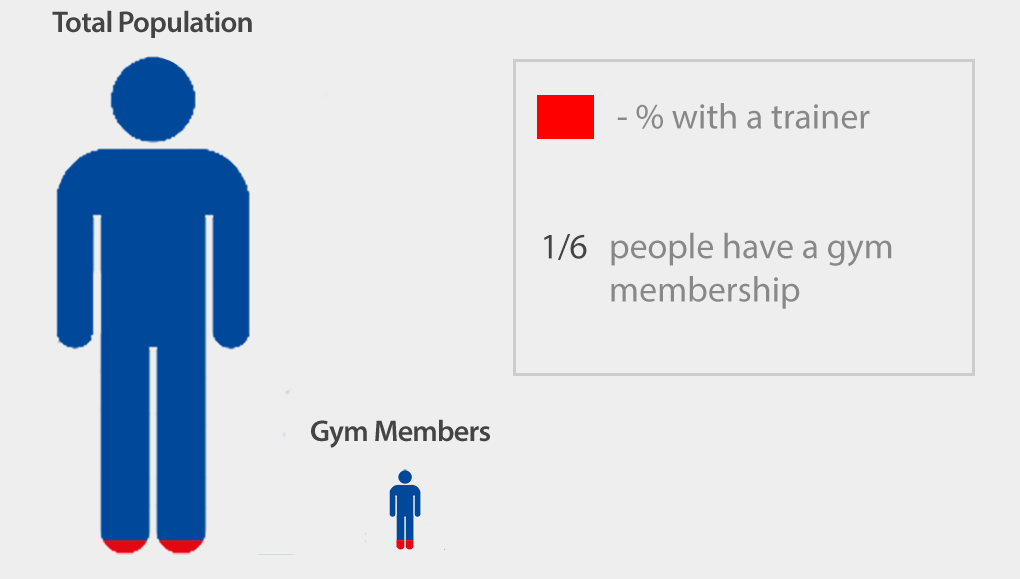Welcome back to our 4-part series about how fitness professionals can save time and make more money by taking a long term approach to managing and executing your business. In the first part of the series we talked about the language of your relationship with your clients: their fitness programs. In this part we will focus on the mechanism that sets out the expectations and measures progress of that relationship: the assessment.
Now we all know what the first assessment represents: the first and best sales opportunity to sell personal training. I think we also know that assessments have turned into more of a tactical pressure sale and less of a real appraisal of client fitness along with proper goal setting and a thoughtful long term plan. Whether that’s because of the business model where you work, the natural psychology of a sale, or the compressed time in a one hour appointment, that tends to be the reality in the fitness industry today. It’s all there still: a quick discussion about history and goals, taking body composition measurements by whatever means possible, rushed strength, cardio and flexibility tests, setting some weekly and long term SMART goals with a corresponding plan (sometimes even with phasing!), and last but not least, the discussion about training support and the costs behind it.
I am not saying that this is not a sale and shouldn’t be treated as such, but it is a sale with a longer closing cycle than what is usually provided. I have always believed that if you have a product or service worth selling, the best way to do it is to focus on value and be straightforward. If you are passionate about what you are selling, the first part should be very easy, which makes the hard part, closing, a lot easier. Everyone needs fitness to be healthy, and everyone would be better off working with a professional as much as they can. More importantly, everyone needs to understand how their body and metabolism works, and have a plan to get to where they want to be with their fitness. The assessment is your first, and hopefully not last, chance to build your value as the beacon through the vast sea of fitness information that is out there today. Moreover, it is a chance to focus on what you do, and set the tone with your potential client as a caregiver, and not a salesperson.
Let’s take a look at the basic steps of a sale to see how they apply to the current way of doing business. Then I’d like to address how these steps can be applied in a longer sales cycle. For simplicity we will lump the prospecting, lead generation and qualifying into the first step:
Steps of the Sale
Lead generation - In this case, getting a potential client booked into an assessment.
Assess needs - get the history, goals and measure fitness levels to assess the need and level of training support required.
Build value - Accountability, motivation and applied knowledge (to the client plan and goals) are the values of personal training to be established.
Ask - The training sale needs to be set up with a plan for the client and corresponding plan for training support, with an idea of costs.
Overcome objections - Getting to a “yes” requires working through budget and scheduling issues.
Closing - Agreeing to a package of training, completing the transaction, and booking the first sessions.
Follow up - If the sale is made, this happens naturally with renewals at the end of training packages. If not, follow up would be in the form of reassessment or other engagement between the potential client and trainer.
The Usual Way of Doing Business
Below, I have outlined how I continually see this sales cycle occurring in the current paradigm. In my next post, I address how you can turn these common mistakes into an effective and productive sales plan.
1. Lead generation
Most assessments come from a new member sign up or a prospect generated from a call to action.
The prospect is not always aware that the purpose of this meeting is a sale.
2. Assess needs
Gather information in a very prescribed way (measurements, strength, flexibility, movement, and cardio tests).
Trainers go into each assessment with the approach that this person needs their help on a weekly basis (that’s the only way most trainers can sell their service).
Steps are often rushed through in order to leave time for planning and talking options.
Assessee gets a questionnaire to fill out ahead of time, but very seldom do these come back filled out or in enough time for the assessor to process the information.
3. Build value
Since the assessment is often rushed, the opportunities to build value are right before or after the initial ask and limited to things external to the buy like:
testimonials
facts about trainers
deals on starter packages
Hard for a buyer to tie real value for themselves to before and after pictures, or to the fact that 80% of training clients reach their goals 3x faster with the help of a trainer (a common line at a former employer of mine).
4. Ask
Setting up the sale:
Goals are set (or further defined) using the assessment information (shame, embarrassment and overwhelmed feeling).
A weekly and long term plan are prescribed, usually with little thought given to phasing or time for explaining how the plan will need to evolve over time.
Training packages are presented for weekly training options, with the hourly rate decreasing as more sessions are bought up front.
5. Overcome objections
Main objections: they can’t afford it or they can do it on their own.
You often have limited flexibility to overcome objections: either change the package size or length, or offer payment options.
Alternatively, some gyms use tactics to increase the need (in the worst cases, pressuring the potential client that they have to have the service regardless of if they can afford it or not).
6. Close
This is the part of the sale that, in my experience, trainers struggle with the most.
You take the time to present all of this information but struggle to ask “would you like my help to reach these goals?” or any other soft closing question.
Often pass the close on to a manager or other salesperson who has little rapport with the potential client.
If the client does not buy they are given some free options like classes or a self-directed circuit, and hopefully, scheduled for a reassessment.
7. Follow up
If training is not purchased, follow up rarely happens nor is a system usually in place for reassessment.
The member needs a good reason to re-engage.
Many trainers and facilities offer an introductory session or orientation, but this is acting as another sales point for general member service, and not the start of a supporting/caring relationship.
The reality is that it is very difficult to properly fit all of these steps into a one hour assessment, so compromises are made. The history, measurement and planning stages are rushed through with little time allowed for explanation or discussion. Setting up the sale consists of massaging goals, weekly needs and long term plans into easy to calculate packages. Your real value lies in accountability and your ability to apply your fitness knowledge to the member’s unique body and goals. However, building up this value is often an afterthought in an assessment, when it is actually what makes a good sale. From the potential client’s perspective, the role of caregiver quickly transforms into salesperson as these incongruencies are easily seen through and value is lost.
The good news is: It is not your fault! The current way of doing business breeds inefficiency with closing rates of 10-20% being acceptable and only about 12% of gym members having a personal trainer (this translates into only 2.4% of the general population). Even though reassessments have a much higher closing rate, they seldom happen because the potential client is either so turned off in the first place that it’s tough to build lasting rapport, or there is no proper mechanism for ongoing engagement for the potential client (something we are working on fixing at Trainer+). The result is that doing assessments becomes a time sink of unpaid hours, hunting for clients that can afford it and are already thinking about training at least twice a week (or better yet, someone who is getting married in 5 months). For me, these appointments went from opportunities to help and flex my knowledge (I do love to talk after all) to dreaded holes in my weeks to satisfy my boss’ quotas.
THERE IS A BETTER WAY.
And in the end, it not only helps save time, but it should create more revenue opportunities and allow you to keep your focus on helping people. Check out my next post, where I go into much more detail about what this “better way” actually looks like.
About the Author: Nick Corneil is the founder of Trainer+, a company that builds software that makes it easy for fitness professionals to create, share, track and analyze fitness programs for their clients. For more information, sign up here or check out our homepage.








